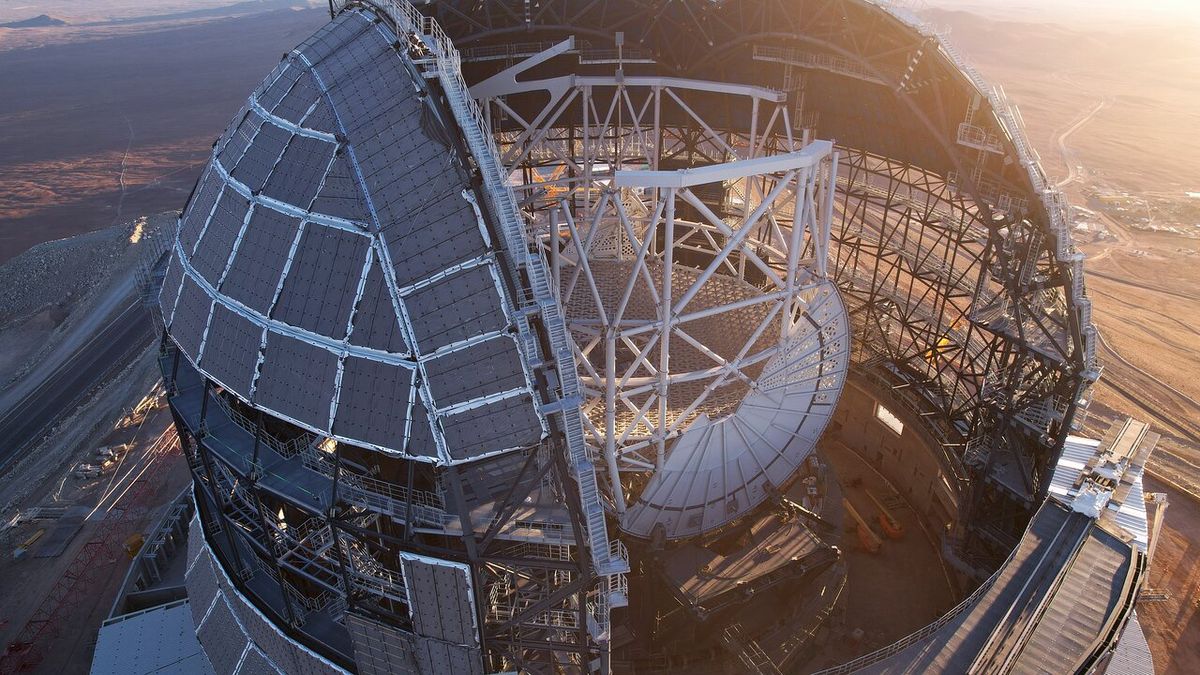A massive telescope being constructed in the desert: The largest telescope in the world takes shape (photo)


A ‘giant’ rising in the desert: World’s largest telescope comes together (photo) (Image Credit: Space.com)
Construction of the world’s largest telescope moves forward with progress of the structure’s dome and housing for the primary mirror.
The European Southern Observatory’s (ESO) Extremely Large Telescope (ELT) — the world’s largest visible- and infrared-light telescope — is currently under development on the Cerro Armazones mountain in Chile’s Atacama Desert. The mighty telescope is expected to see its “first light” by 2028, with the goal of observing terrestrial exoplanets and their atmospheres, as well as measuring the expansion of the universe.
New photos from the ESO reveal that progress has really been made with construction of the ELT, including its dome, central structure and base of the M1 mirror — one of five mirrors that will work together to observe the cosmos.
The ELT “will be one of the main flagships of the European Southern Observatory for the next two decades,” the ESO said in a statement releasing the new images.
Once complete, the M1 mirror will measure 128 feet (39 meters) across and weigh a whopping 200 tons. The white lattice structure shown in the center of the dome will hold the M1 mirror, allowing it to move smoothly during observations and compensate for varying gravity loads, wind conditions, vibrations, or changes in temperature.
On-site webcams, drone footage and photographs of the construction site allow for step-by-step progress updates of the ELT. In addition to the recent photos shared by the ESO, you can track development of the telescope through interactive webcam footage that streams live 24/7. The observatory also shared a time-lapse video of the construction site, with the warm glow of the sun rising over the optical telescope.
If all goes according to plan, the anticipated development timeline for the ELT will see the telescope’s secondary mirror (M2) completed in 2025. The 14-foot (4.25-meter) mirror — the largest convex mirror ever produced — will reflect light collected by M1 to the 12-foot (3.75-meter) tertiary mirror (M3), which has an estimated completion date in 2027. This mirror system will allow for better quality of observations over a larger field of view. The dome and telescope structure are on track to be completed by 2026.







